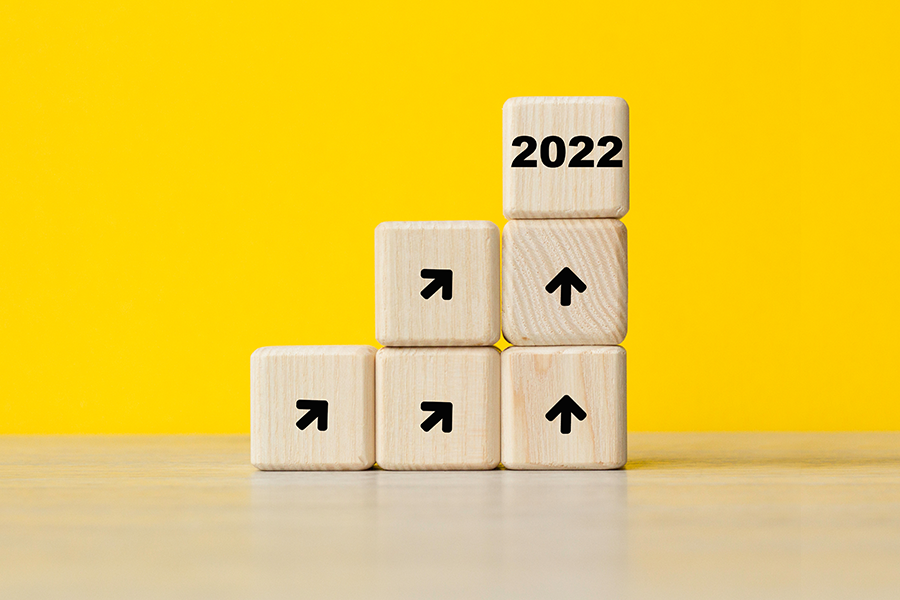Earlier this year, Fortune 500 financial technology company Global Payments published the five global trends that would significantly impact commerce in 2022. As Eway is a Global Payments company providing effortless online payments in the Oceania region, we’ve pulled out some of the most relevant trends and tips for this market. These trends included:
- Changing customer expectations
- Increased use of buy now, pay later plans
- More connected ecommerce
- Digitised B2B payments
- Increased focus on data security
Let’s take a look back at these predictions as the year comes to a close and view the commerce and payment landscape with the benefit of hindsight.
Did digital payments accelerate in 2022? Which new payment methods are relevant to your business? What’s happened with buy now, pay later (BNPL)? Here are the 2022 highlights in commerce and how they have helped shape payments this year.
TREND 1: Customer expectations are changing. Are you meeting their needs?
Global Payments anticipated businesses would further invest in refining their digital experiences, beginning with payments and digital commerce would increase from $4.88 trillion to $5.49 trillion worldwide between 2021-2022. As the year turns its final corner, digital-first economies continue to grow.
Organisations are adapting. Of the more than 200 businesses surveyed by Global Payments, 42.4% reported expanding the digital payment methods offered to better meet the preferences of their customers.* These include adding digital wallets, the ability to send digital invoices and online payment links—all contactless payments. Research confirms contactless payments are increasing exponentially, expected to nearly quadruple in value by 2026.
For businesses, this is a call to ensure that you accept the digital payment methods your customers prefer. Offering the right payment mix, including contactless, can turn your shoppers into buyers.
42.4% of businesses reported they expanded their digital payment methods*
Of the more than 200 businesses surveyed, 42.4% reported they expanded their digital payment methods this year to meet customer payment preferences.
TREND 2: Buy now, pay later soars
Experts forecast BNPL would become one of the hottest payment trends in 2022. BNPL is not a new concept. Instalment payments on big-ticket items have been around for decades. But now businesses and issuers are being pushed to think differently about extending credit to their customers for even the smallest items.
$40b – expected market size of BNPL by 2030
We don’t expect BNPL to go away anytime soon. BNPL is a $6.2 billion market that researchers predict will grow to nearly $40 billion by 2030.
TREND 3: B2B payments go digital
The digitization of business-to-business (B2B) payments has lagged behind business-to-customer (B2C) payments historically. But in 2022, more businesses were expected to automate their B2B payments. And that’s become the case. Sixty percent of companies are moving from manual B2B payments to digital payments. Why? The top reasons include:
- Supply chain disruptions
- Hybrid work environments
- The “great resignation”
Digitising B2B payments with accounts payable (AP) automation is the top back-office priority in 2022. It keeps essential goods and services moving with faster payment turnaround times, more transparency and better efficiency. With AP automation, nearly two-thirds of companies processed payments more seamlessly with the same-sized team.
Companies are realising the benefits of automating B2B payments. But we’ve yet to reach a tipping point. More adoption is on the horizon.
TREND 4: Connected commerce smooths the omnichannel buying journey
Experts have suggested that building a connected commerce ecosystem in 2022 would be a priority for businesses to create a frictionless customer journey. Of the businesses surveyed this year, 41.5% report having invested in the digitization of their customer’s shopping experience.*
And we predict that number to increase as digital and physical shopping continue to fuse.
Seventy-three percent of all buyers prefer to combine digital and physical shopping. What’s more, these shoppers—also known as omnichannel shoppers—spend 10 times more than customers who only buy in-store or online.
Companies of all sizes are responding by offering more hybrid shopping experiences like buy online, pickup in store (BOPIS). According to Statista, 59% of businesses plan to provide omnichannel options like BOPIS over the next few years.
Connecting other digital solutions like loyalty programs, online appointments and automated communications help improve your customers’ satisfaction with their buying experience.
TREND 5: New data privacy regulations surfaced
As technology and regulations evolve rapidly, we noted the importance of staying on top of data privacy policies, procedures and protections.
Over the year, new regulations on data privacy emerged. The UK’s strong customer authentication (SCA), for example, went into effect in March to protect customers from fraud. In the US, in addition to the American Data and Privacy Protection Act (ADPPA) considered by Congress, at least 35 states considered almost 200 consumer privacy bills in 2022.
In Australia the government’s ongoing review of the Privacy Act 1988, is likely to impact people and organisations, particularly in the area of the definition of personal information, stronger consent requirements and a person’s ‘right to erasure’ of their personal information.
Importantly, the Privacy Act review is occurring alongside the Online Privacy Bill, a binding code for social media and other online platforms, which will also increase penalties and enhance enforcement measures. This broader scope will increase the compliance burden for organisations.
Our advice: Keep on top of regulatory and compliance issues.
In 2022, the trends predicted at the outset of the year—customer expectations of digital payments, buy now, pay later, connected commerce, the digitization of B2B payments and regulations on data privacy—matured over the year. You can expect these trends to continue to shape the landscape well into the next year—with more on the horizon.
This article was originally published by Global Payments and has been updated to suit the Oceania payments landscape. Eway is a Global Payments company.
*The global survey of 217 businesses mentioned in this report was conducted online between July 12, 2022, and August 12, 2022.


Subscribe to updates
Get the latest news and payment insights from Eway hot off the press.



